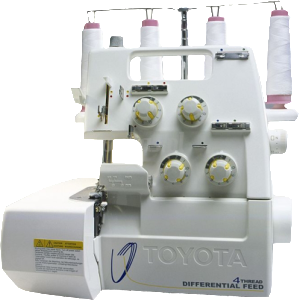Welcome to step 4 of our guide to making curtains. For those of you who have been following, please read on.
On the other hand, if you have managed to land here from afar, you may want to check out Steps 1-3 to find out what we did first!
Step 4: Cutting your fabric to the correct length.
First, unfold your fabric on to a flat surface. Obviously, if you are making curtains that are quite long, you may not be able to unfold the whole length. Don’t worry, just unfold as much as you can. Next, we need to make sure that the cut end is a straight cut. If not you will need to cut off as little as possible to straighten it up.
Now this next bit is where things differ depending on whether you have chosen plain fabric, or patterned fabric, to make curtains with.
Making Curtains with Plain Fabric:
Measure down the side of your fabric. When you reach the finished length you require for your curtains, put a pin at the edge. Now add another 8 inches (20 cms) and put another pin at the edge. (This extra measurement is for the top and bottom hems). Now, Double Check your measurements! 🙂 Once you are happy that you have measured correctly, cut straight across the width of fabric just after the second pin, and remove both pins. Right… that’s one piece done. Now… do that again… and again until you have the correct number of widths required to make curtains the size you need.
Making curtains with Patterned Fabric:
If you are making curtains from a patterned curtain fabric, it’s recommended that you do something called ‘Pattern matching’. Basically, this means that we need to ensure the pattern will line up when we join two lengths together. The process for cutting patterned curtain fabric is similar to plain, except we need to allow for the pattern repeat.
So first, take note of what the pattern looks like along the top cut edge of your fabric. Now, as with plain fabric, measure down the side of your fabric. When you reach the finished length you require for your curtains, put a pin at the edge. Now add another 8 inches (20 cms) and put another pin at the edge. Next, we need to look below the second pin to find the point in the pattern that matches the top cut edge. This can be a little tricky depending on the pattern so be sure to find the correct point. When you find it, put another pin at that point. The fabric between the second and third pins can now be removed.
Now, the pattern along your new ‘top edge’ should be identical to the one along the cut edge you started with. It is?… Great… Now remove the pins and repeat that process until you have enough widths required to make curtains the size you need.
That’s it, your fabric should now be cut to the correct length. If you are making curtains with linings, simply follow the ‘Making curtains with plain fabric’ part above to cut your lining fabric to the correct length.
What about the curtain width?
That’s a good question. Many curtains may be wider than one width of width of fabric, but not as wide as two. For example if you are making curtains that are 182cm(72″) wide. This would take approximately one and half widths of 137cm(54″) wide fabric.
The good news is that we don’t really need to be quite so fussy here. The odd few extra centimetres or inches, won’t make a very big difference to the gather of your finished curtains. That said though, we do need to ensure we have enough extra width in our fabric to join it and allow for hemming the sides.
For the rest of this ‘How to make curtains guide‘ we will stay with our example above. We will be making curtains that are approximately 182cm(72″) wide and we will be using 137cm(54″) wide fabric.Now obviously one width of curtain fabric isn’t going to do the job. As mentioned above it will take about one and a half widths. Here’s how to work out how much extra fabric we will need.
First we take our 72 inches and add the extra measurements we will need for joining and side hems. So that’s 72 + 4 inches for side hems + 2 inches (1 inch per piece of fabric) for joining purposes. That gives us with a total width of 78 inches. Now simply deduct 54 (one width of fabric) from 78. Therefore we need an extra 24 inches in order to make a curtain that is 72 inches wide.
Personally, I wouldn’t be too fussy. I would just cut one length of fabric down the middle giving me a piece 27 inches wide. As mentioned earlier, making curtains a few inches wider will make very little difference to the gather of your curtain. Also it saves a little time having to cut down the length of your fabric twice (once for each curtain you make).
Next – Step 5: Joining your curtain fabric.


